We had a big shearing day on Thursday, and I will have lots of new fleeces posted for sale in my web-shop in the next day or so.
Each year we have two shearing dates; the first is in January when we do the pregnant ewes before they have their lambs. We let the rest of the flock keep their fleeces for another couple of months, shearing them in March. This year our shearing date had to be postponed to April because of bad weather.
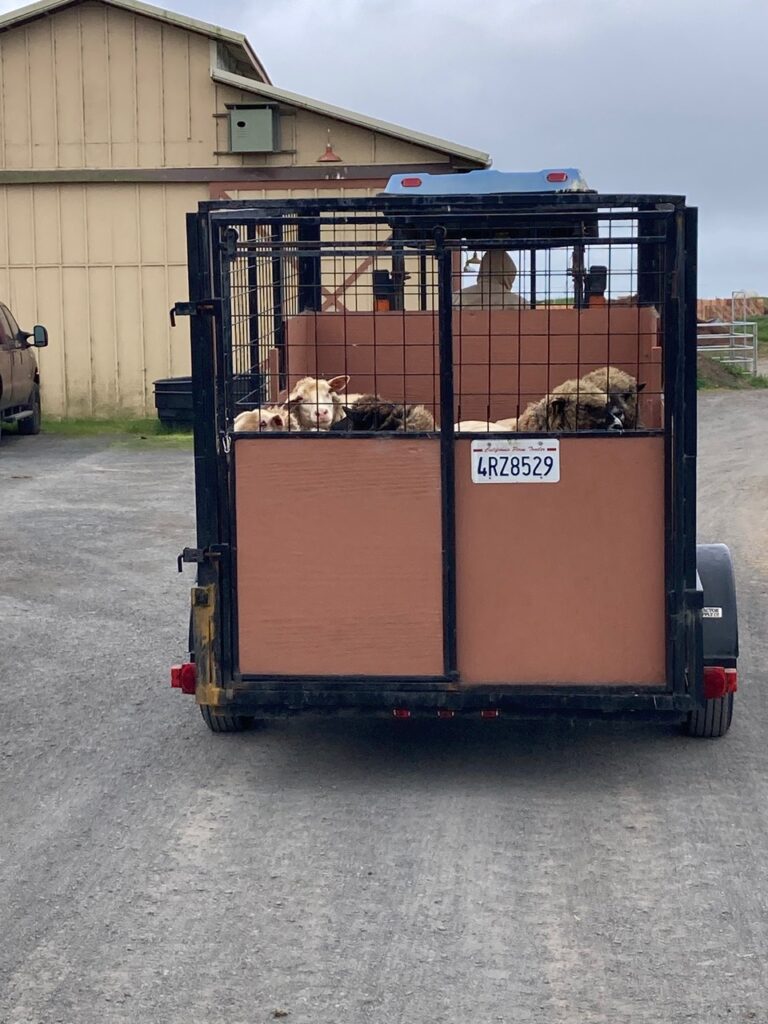
Our second shearing requires complicated logistics, because we have 5 separate groups to shear. They all need to spend the night in the barn without food, so their rumens are empty, which makes the shearing more comfortable for them.
We wind up using every available space–this year the pet ewes from my back yard and Lisa’s pet wethers shared the lambing area in our horse barn, and the big group of “open” ewes (ewes we did not breed this year) spent the night in the mixing pen in the other barn. We put the older rams in an empty box stall and the young rams in the outside paddock to that stall.
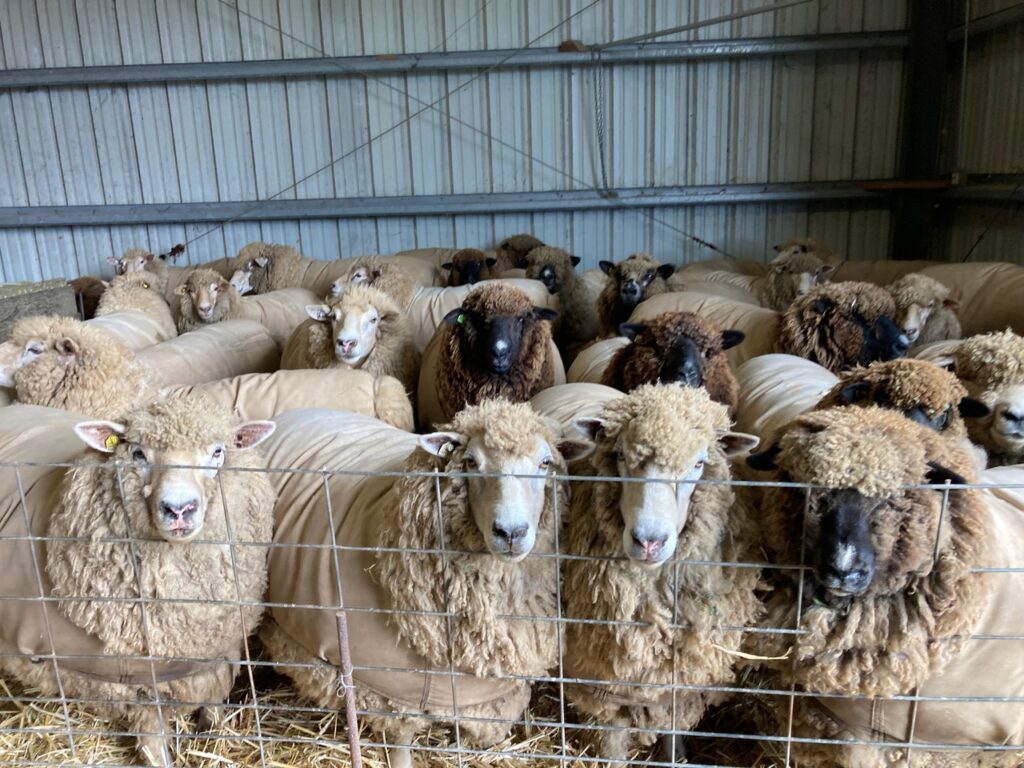
First thing in the morning before John arrived, we crowded the sheep in a small space so they couldn’t get away from us, and one by one we removed their protective coats that keep their fleeces clean.
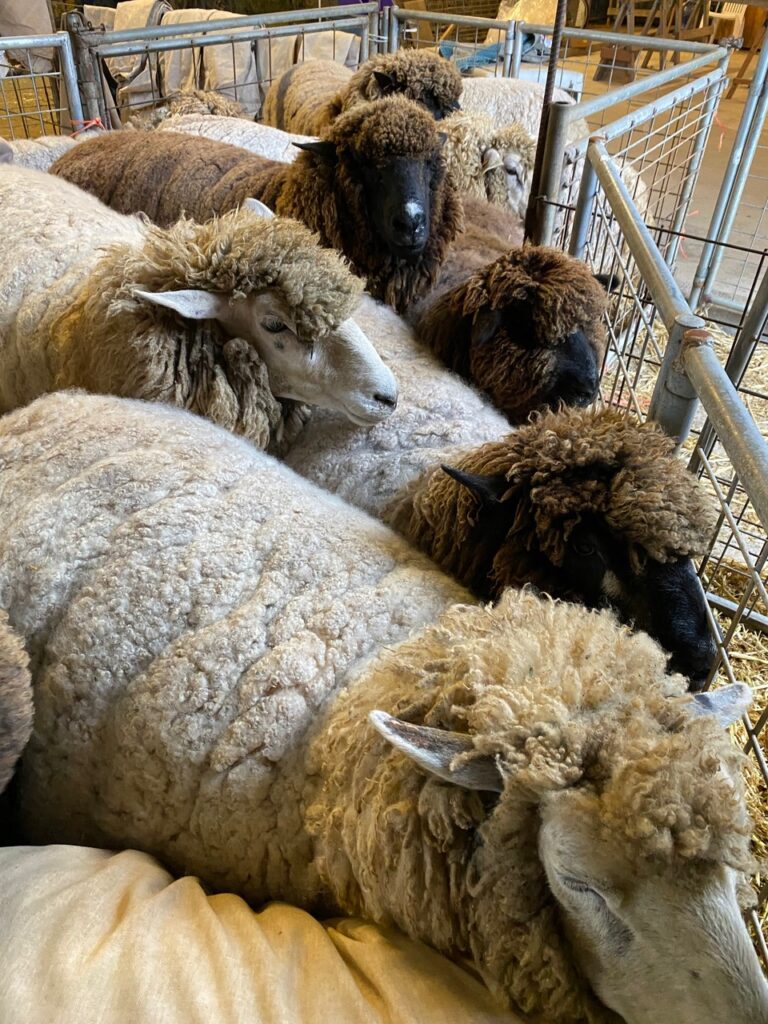
John arrivedat 8:30 and the shearing began!
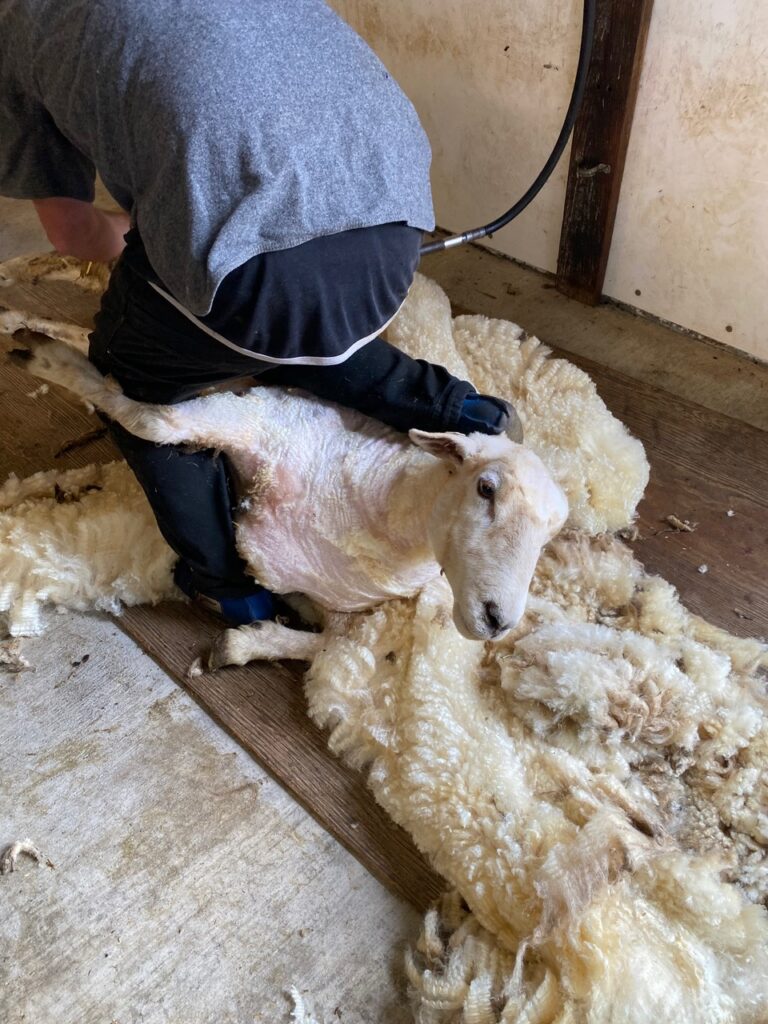
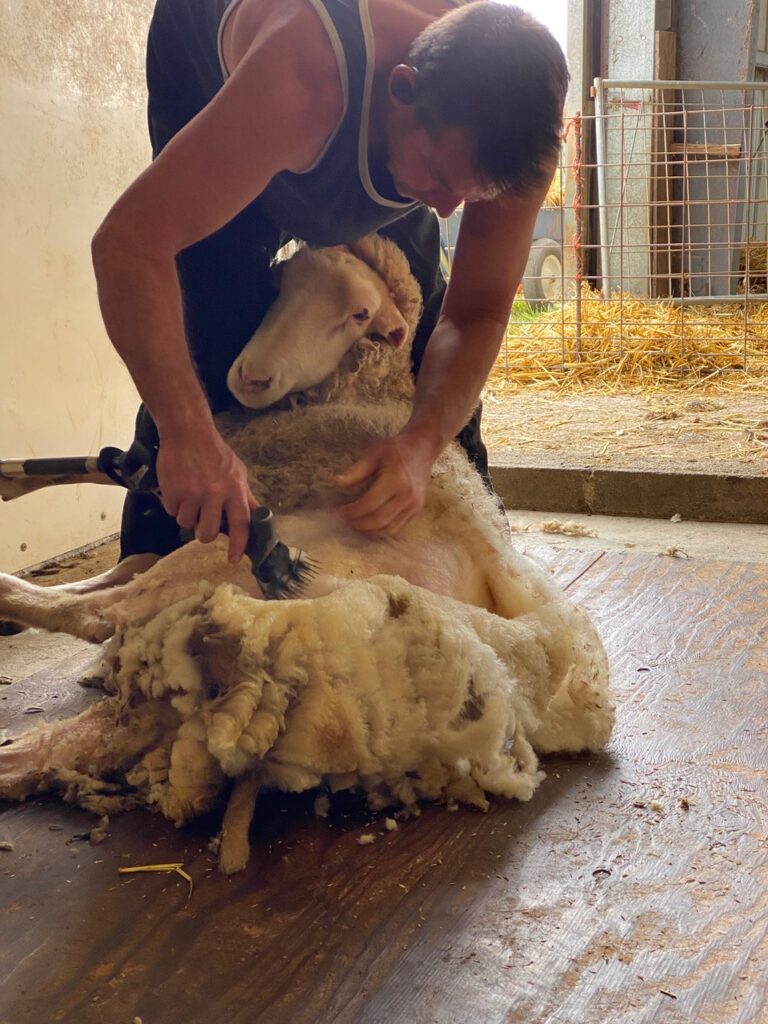
It’s important to clean the floor after each sheep is sheared, so that no fleece gets contaminated with pieces from the previous fleece. My friends Patty and Misty did a good job of sweeping the debris out of the way.
Misty also ran the dirty coats back to be washed in the other barn and brought clean coats for the sheep to wear after they were shorn.
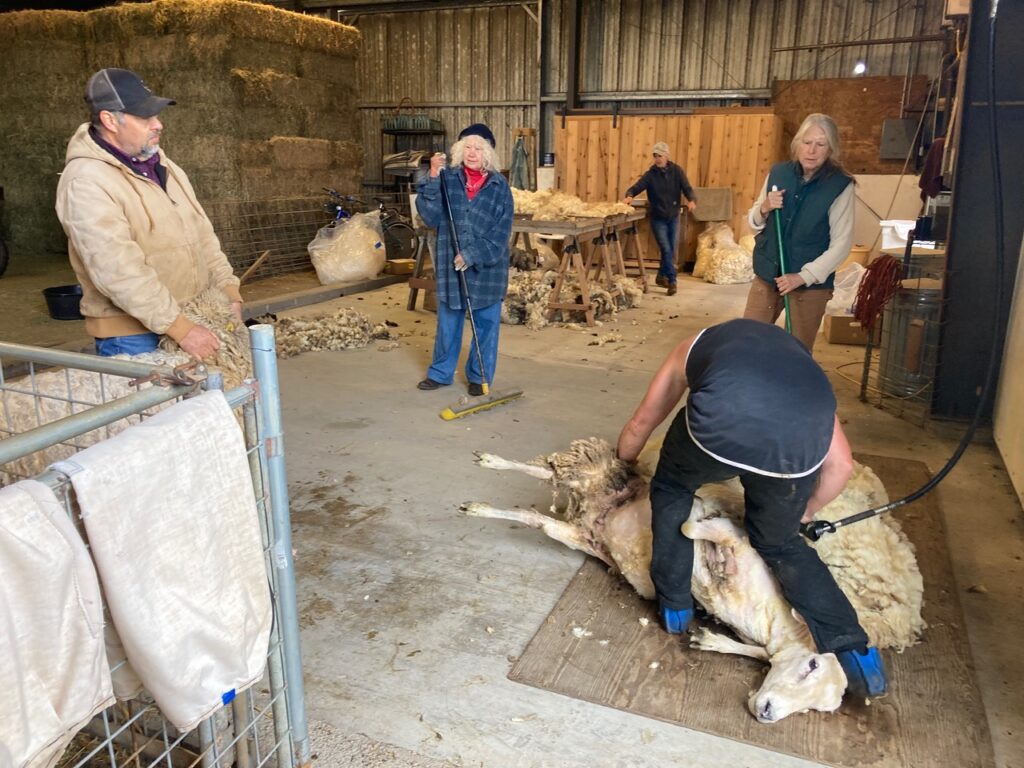
As each ewe waited her turn, Patty recorded her ear-tag number, looked up her name on a list, and made out a card for me to use to label the fleece. She also labeled an envelope that I used to hold a sample of every fleece.
I keep samples in a notebook to document how each sheep’s fleece evolves in character and color from year to year. I also send samples to a lab for testing: the lab reports the fiber diameter in microns, which is a measure of how fine and soft to the touch the wool will be.
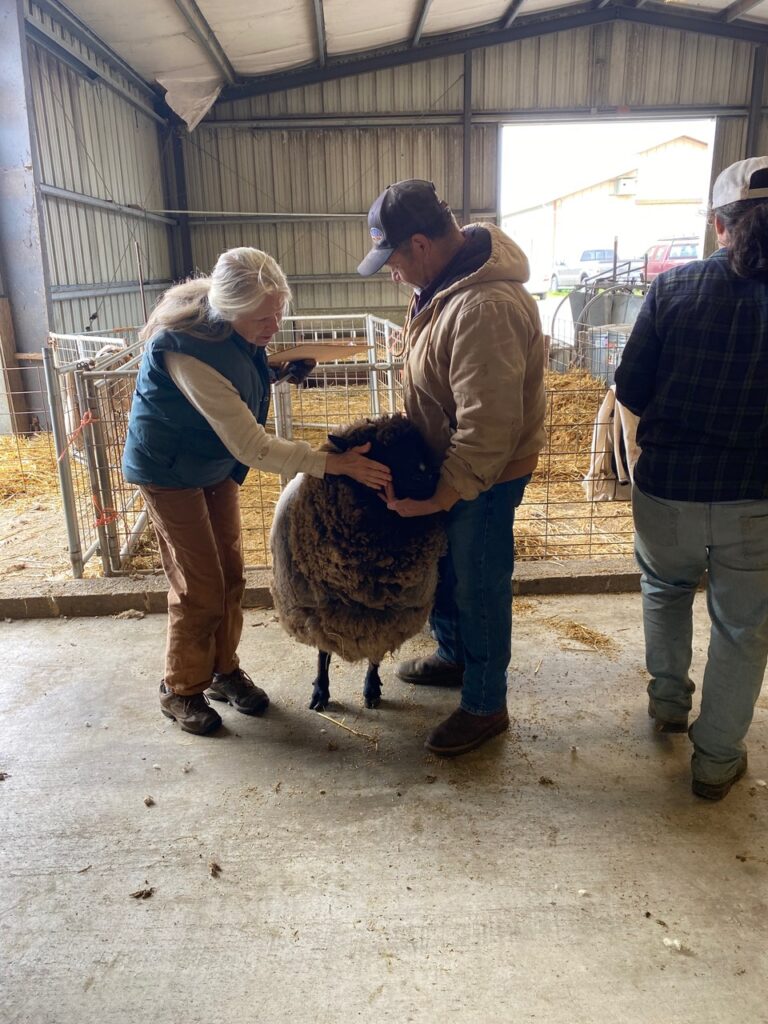
As soon as each fleece was off the sheep, I gathered it up and flung it out on the skirting table, and skirted it, removing the dirty and coarse parts around the edge of the fleece. I then rolled up the fleece and bagged it, after taking a sample for my records and for lab testing, and added the card that Patty made out with the sheep’s name and ear-tag number.
All the skirtings accumulate under the table, and at the end of the day they go into our compost, where they completely degrade to nutrients we can add back to our soil.
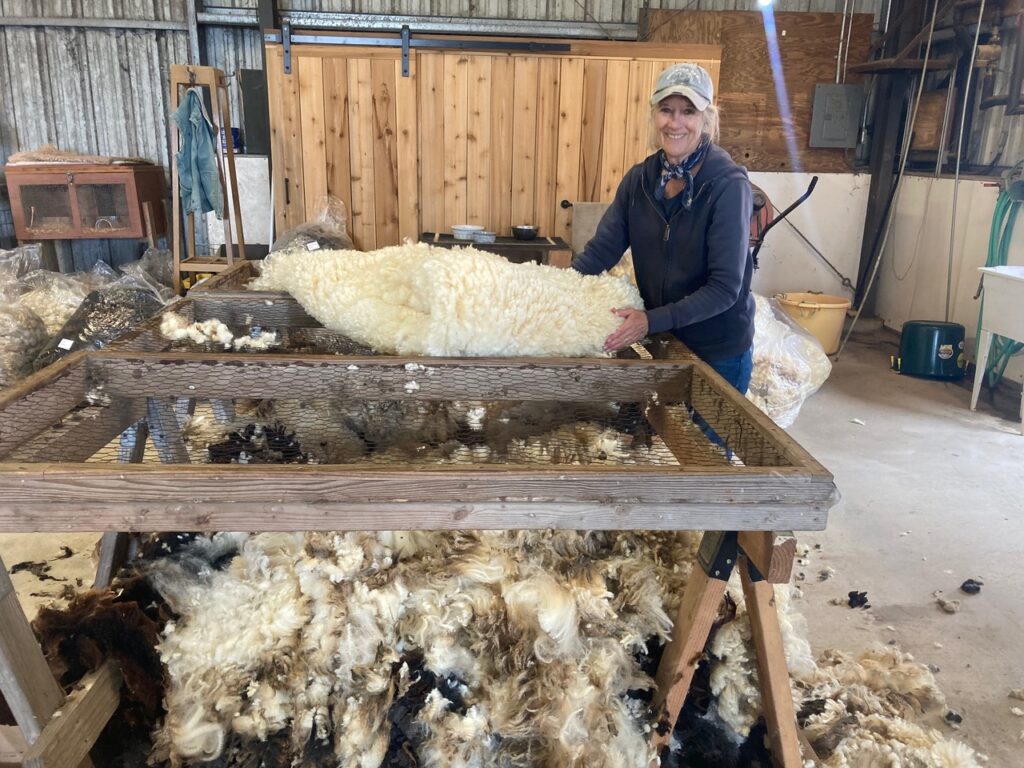
When John finished with each sheep, a little dance took place in which John released the finished sheep to Melinda, Lolo passed John the next sheep to be sheared, and then took the finished one from Melinda and held her while Melinda fitted her with a fresh coat.
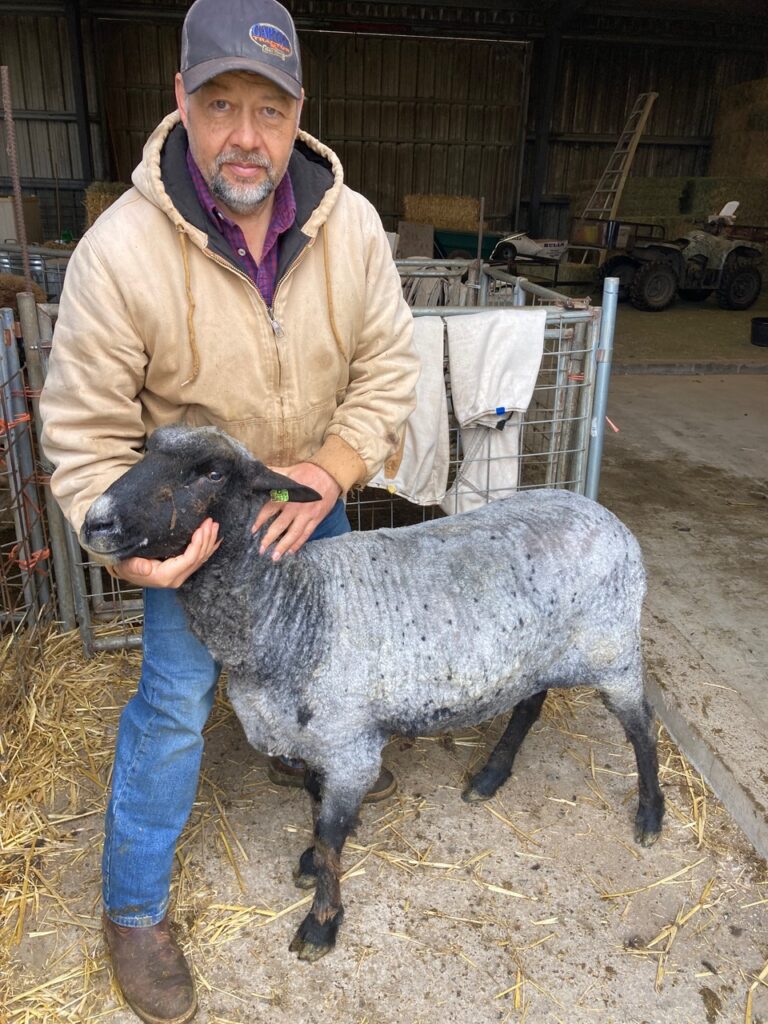
By the end of the day everyone was exhausted, but also satisfied at a job completed and another year’s worth of fleeces safely stored away for sale. And thank you to Melinda for taking all these great photos. I’m sorry that is the reason that Melinda is not pictured here! Her role in shearing is so huge and essential and on top of that she is the photographer!
